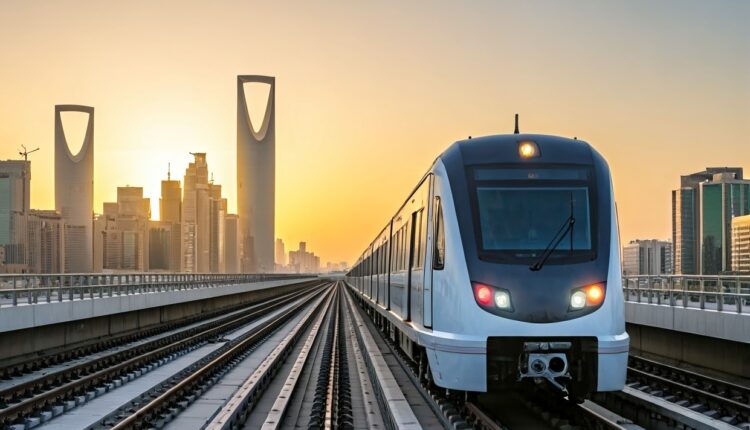Riyadh’s Rail Transformation: A Shift Toward Sustainable Mobility
Riyadh, traditionally dominated by cars, is undergoing a major transformation in its transportation landscape. As part of Saudi Arabia’s Vision 2030, the city is investing in a comprehensive rail system that aims to reduce reliance on private vehicles and provide more sustainable, efficient public transportation.
The launch of the Riyadh rail transformation, with the Riyadh Metro in December 2024, marks the first step in this shift, with further expansions already underway.
Revolutionizing Transport with the Riyadh Metro and Future Expansions
The centerpiece of Riyadh’s rail transformation is the Riyadh Metro, which officially began operations in December 2024. Spanning 176 kilometers, the metro consists of six lines and 85 stations, strategically connecting key districts across the city. This modern transit system is designed to:
- Ease traffic congestion by providing faster, more reliable public transport options.
- Reduce Riyadh’s carbon footprint and contribute to Saudi Arabia’s sustainability goals.
- Enhance mobility by linking residential, commercial, and business areas.
The success of the Riyadh Metro has laid the foundation for further growth. One of the most anticipated projects in Riyadh’s rail transformation is Line 7, a 65-kilometer extension that will add 19 new stations, 14 of which will be underground. The expansion will connect vital areas such as Qiddiya Entertainment City, King Salman Park, and Diriyah Gate, and is expected to be completed by 2027.
Enhancing Regional Connectivity with High-Speed Rail
In addition to the metro system, Riyadh’s rail transformation is also working on high-speed rail to improve regional connectivity. This new high-speed rail will link key locations, including:
- King Salman International Airport
- King Abdullah Financial District
- Qiddiya City
The rail system will operate at up to 250 km/h, significantly cutting travel time. For example, the travel time between the airport and the financial district will be reduced to just 30 minutes, making this high-speed option an attractive alternative for both commuters and tourists.
Upgrading Existing Rail and Overcoming Environmental Challenges
Riyadh is not only focused on building new rail infrastructure but is also modernizing its existing rail services as part of Riyadh’s rail transformation.
- The introduction of new FLIRT Intercity Trains, offering modern interiors and increased seating capacity.
- Improved efficiency and safety to accommodate growing passenger demand.
These modern trains feature increased seating capacity, enhanced safety features, and improved comfort.
Building rail infrastructure in Riyadh’s desert environment has posed challenges, especially due to extreme temperatures and sandy soil. To address these issues, engineers have implemented cooling and ventilation systems in both stations and trains to ensure passenger comfort during the hot summer months. Additionally, pressurized tunnel boring machines are being used to stabilize the soil for underground construction.
Conclusion
Riyadh rail transformation represents a significant step forward in creating a more sustainable and efficient urban transport system. With the Riyadh Metro, ongoing expansions, and high-speed rail projects, Riyadh is positioning itself as a model for sustainable, modern urban mobility.
These developments will reduce congestion, improve air quality, and make the city more accessible for residents and visitors alike.
Follow ArabWheels for the latest automotive news and updates.

